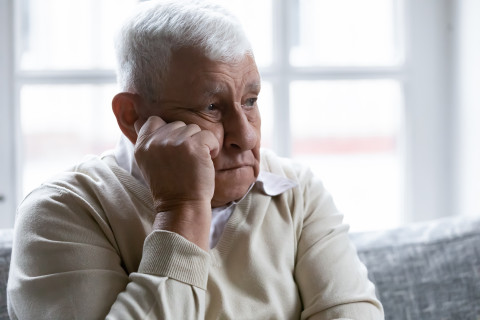Approximately one in two home-dwelling people aged 65 years or older experience pain weekly, according to the doctoral dissertation of Merja Karjalainen, Licentiate of Medicine. Pain was associated with depressive symptoms and comorbidities and especially daily pain with poor self-rated health. People with diabetes experience a higher burden of comorbidities, symptoms and medications than those without diabetes, but in this study, pain was not specifically associated with diabetes.
The number of people with type 2 diabetes is increasing in younger and middleaged people, resulting in a higher prevalence also among older people. People with diabetes have more comorbidities than people without diabetes. As people live longer, the burden of diseases gets bigger. Previously, chronic or frequent pain have been found to be associated with diabetes. However, the prevalence and impact of pain and the use of pain medication among older home-dwelling people with diabetes compared with those without diabetes is not definite. This study investigates pain, self-rated health, the use of pain relieving drugs, kidney function and potentially nephrotoxic drug use in older home-dwelling people with diabetes compared with those without.
Home-dwelling people aged 65 years or older (N=527) with diabetes were identified from the electronic patient record of Inner-Savo primary health care district and age and gender matched control persons (N=890) were identified. Questionnaires were sent to the participants and 1,084 (76.5%) of them responded. Frequent pain was perceived as any pain experienced more often than once a week. A Numeric Rating Scale (0-10) was used to assess the interference and intensity of the pain. The participants assessed their health with a Visual Analog Scale and Likert-type scale. 259 randomly selected people with diabetes and 259 people without diabetes were drawn from those participating in the questionnaire survey and invited to a health examination. Altogether 363 (70%) participated, of which 187 were people with diabetes and 176 people without diabetes. The physician conducted the health examination according to a standard Pain and pain medication among home-dwelling older people with and without diabetes 8 protocol. In addition, blood samples were drawn, and the glomerular filtration rate (eGFR) was estimated by using the CKD-EPI equation. Pain medication use and the nephrotoxic medication profile were defined.
In the questionnaire survey, frequent pain was reported by 63% of women with diabetes and 50% of women without diabetes (adjusted, p = 0.22), and in men 47% and 42% (p=0.58). In women and men, the comorbidity burden and depressive symptoms were associated with frequent pain but not diabetes. Neither pain intensity nor interference were associated with diabetes. Frequent pain was associated with poor self-rated health both when assessed with the Likert scale and VAS (p In the questionnaire survey, frequent pain was reported by 63% of women with diabetes and 50% of women without diabetes (adjusted, p = 0.22), and in men 47% and 42% (p=0.58). In women and men, the comorbidity burden and depressive symptoms were associated with frequent pain but not diabetes. Neither pain intensity nor interference were associated with diabetes. Frequent pain was associated with poor self-rated health both when assessed with the Likert scale and VAS (p
The results based on the health examination showed that of people with and without diabetes 66% and 62% used some pain medication (p=0.45). The respective proportions of regular use were 11% and 13%, and as-needed use was 61% and 56%. Diabetes was not associated with pain medication use. Pain medication was used more as needed than regularly. Accordingly, there were not significant differences between people with and without diabetes in potentially nephrotoxic drug use (1.06 drugs versus 0.97 drugs, p=0.39) and kidney function (80.5 versus 77.5 ml/min/1.73m2, p = 0.089).
The results of this study showed that older home-dwelling people with and without diabetes were not significantly different when pain, use of pain medication and kidney function are considered. The way in which self-rated health was associated with pain was similar in both people with diabetes and without. However, these results suggest that due to a heavier disease burden, specific attention should be paid to pain management and pain medication in older people with diabetes
The doctoral dissertation of Merja Karjalainen, Lic Med, entitled Pain and pain medication among home-dwelling older people with and without diabetes will be examined at the Faculty of Health Sciences. The Opponent in the public examination will be Docent Merja Laine of the University of Helsinki, and the Custos will be Professor Pekka Mäntyselkä of the University of Eastern Finland. The public examination will be held online in Finnish on 18 June 2021 starting at 12 noon.



